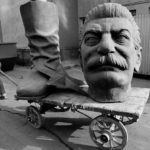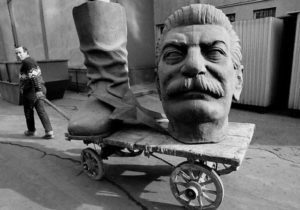Thirty Years since the Fall of the Berlin Wall

 Remember when the Berlin Wall came down? I do.
Remember when the Berlin Wall came down? I do.
Glued to TVs in DeKalb, Illinois, my college friends and I watched in envy and amazement as the young Berliners on our screens swarmed all over that unholy edifice attacking it with hammers and chisels.
It was November 9, 1989. My generation was coming of age as Communism fell in Eastern Europe and the Soviet Union. I can confirm that people—both there and here—were filled with hope for the future.
Then President George H.W. Bush declared a new world order. Bush’s triumphalism inspired some, but it filled others with dark foreboding.
Pundits right, left, and center made all kinds of pronouncements. Marxism is dead, some said. It’s the end of history. Freedom and democracy will spread throughout the world, said others. The world, some feared, would be forever dominated by a single superpower. Free trade and a globalized economy would bring about universal prosperity, others promised. The world would descend into genocidal ethnic conflict fueled by ancient tribal rivalries.
In reality, nobody knew where the world was heading.
Now, 30 years later, where are we? A former KGB officer rules Russia for his own power and profit. And a dubiously elected American president rushes to build his own wall before he gets impeached. As Vladimir Putin strengthens his grip over Eastern Ukraine, Donald Trump stays busy making deals. Busy shaking down democratic Ukraine to help him cover his crooked 2016 tracks and to rig his 2020 bid. Busy stepping ever-so-kindly out of the way, so his Turkish phone-friend can “clean out” the Kurds. Meanwhile, Trump’s absurd trade war with China drags on. And Russia grows stronger.
An ascendant Russian autocracy preying on a struggling American democracy—hardly the “new world” Bush had envisioned.
When I was a kid in the 1970s, grownups told us the tale of life behind the Iron Curtain. Like in some sci-fi novel, a dystopian force had gripped the people’s minds. The few dissenters were a tiny hopelessly heroic and ineffectual lot. They wanted to be like us, but fat chance. Change over there was unimaginable.
This story, however, wasn’t really about them. It was about us—and it was a cautionary tale. It could have no happy ending.
During the Reagan years, I had founded the John Lennon Society, a band of idealistic radicals at Northern Illinois University. When we protested Reagan’s covert wars in Central America, Apartheid in South Africa, and racism at home, our critics called us “Communists.” The DeKalb police kept us under surveillance. Parents worried about our futures.
Far from being Communists, though, we opposed oppression in all its forms wherever it occurred. We identified with the popular uprisings against Soviet totalitarianism, Hungary 1956, Prague 1968. So when we saw mass movements building first in China then in Eastern Europe the Soviet Union, we knew which side we were on.
In 1986, when Mikhail Gorbachev initiated Glasnost and tried manage reform from above, I recall my elders saying it wouldn’t amount to much. They were wrong. By 1989, protests spread across Eastern Europe. Gorbachev lost control of what he started.
BANG! The Wall fell. There could be no turning back.
Here’s what I learned from all that. Don’t assume things will continue the way they are now. Change builds from below and it can be sudden. Its results are neither predictable nor inevitable.
Changing history’s course is not, as President Obama once said, like trying “to steer an ocean liner.” The great helmsman’s hand expertly guiding the ship of state “two degrees to the north or south” is—at best—a comforting illusion.
After decades of no change, barrier breaks. Old ways of thinking are abandoned. People stop behaving as expected. Some wake up one morning and decide down is really up. Others look up one afternoon and suddenly see the sky. People stand up and fight for freedom, or line up behind some numbskull dictator who promises only he can fix things.
In recent years, America has been stepping ever closer to the brink. Of what? Nobody is certain. If the single-party state could fall over there, why doubt some change—equally drastic and unexpected—could happen here?
During the Cold War, many Americans falsely assumed propaganda only worked on Russians, and we made the mistake of letting our freedom be defined by their unfreedom. Now, we are letting malevolent falsehoods peddled by Russian bots and their American quislings mislead and disrupt our political life. Once, we arrogantly hoped they would become more like us. Now, we legitimately fear we are becoming more like them.
Thirty years ago, Berliners mobilized to tear down their wall. Today, Americans watch as a new wall divides our land. There is Trump’s border wall, the barbarism of detention camps, of 5,400 migrant children separated from their parents.
But there is also another wall.
This wall is a cognitive barrier, a division in thought. Built on xenophobia and the pernicious lie that we must return to some mythical past to make America great again. Built on the cynical belief that democracy is a winner-take-all game in which the party in power must follow no rules.
We must tear this wall down.
Youth seldom wish to live in the past, or to live a lie. Congresswoman Alexandria Ocasio-Cortez was an infant when the Berlin Wall fell. After endorsing Bernie Sanders at a massive rally in Queens last month, she said, “We need to have a revolution of working-class people. And it needs to be multi-racial, multi-gendered, multi-generational. Our future is not going to get better unless we demand it and unless we work for it.”
We dismiss this youthful idealism at our own peril.
For now, the oligarchs and liars appear to have the upper hand. But nothing about our future is inevitable. We must envision the society we wish to be—and build a movement to fight for that.
We are as powerful and as vulnerable as any people who have ever lived.